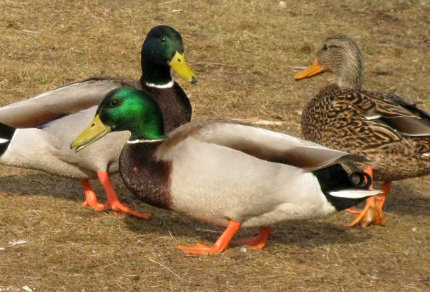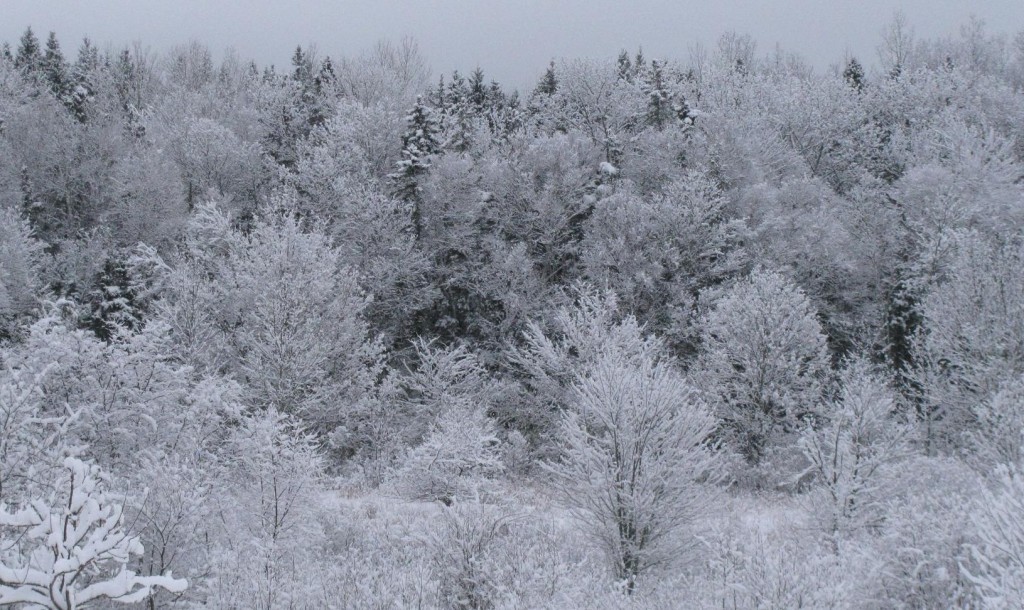
Late Winter Snowscape, Northern Nova Scotia (© Magi Nams)
Two days ago, the world beyond my windows looked like the photo to ther right. Today, wild winds and rain melted vast quantities of snow and left stretches of our access road muddy, puddle-filled or icy depending on exposure and drainage. Yesterday, however, was a sunny late winter dream day with high temperatures in the mid-teens. I spent the day in Truro, the self-proclaimed ‘Hub of Nova Scotia,’ and treated myself to three hours of birding before I tackled library research and shopping chores.
My first stop was the Nova Scotia Agricultural College’s rock garden, where cedar waxwings gobbled up cedar ‘berries,’ which are small, round, fleshy cones containing wingless seeds. Wary at first, the waxwings became accustomed to my presence and allowed me to approach to within two metres to photograph them.
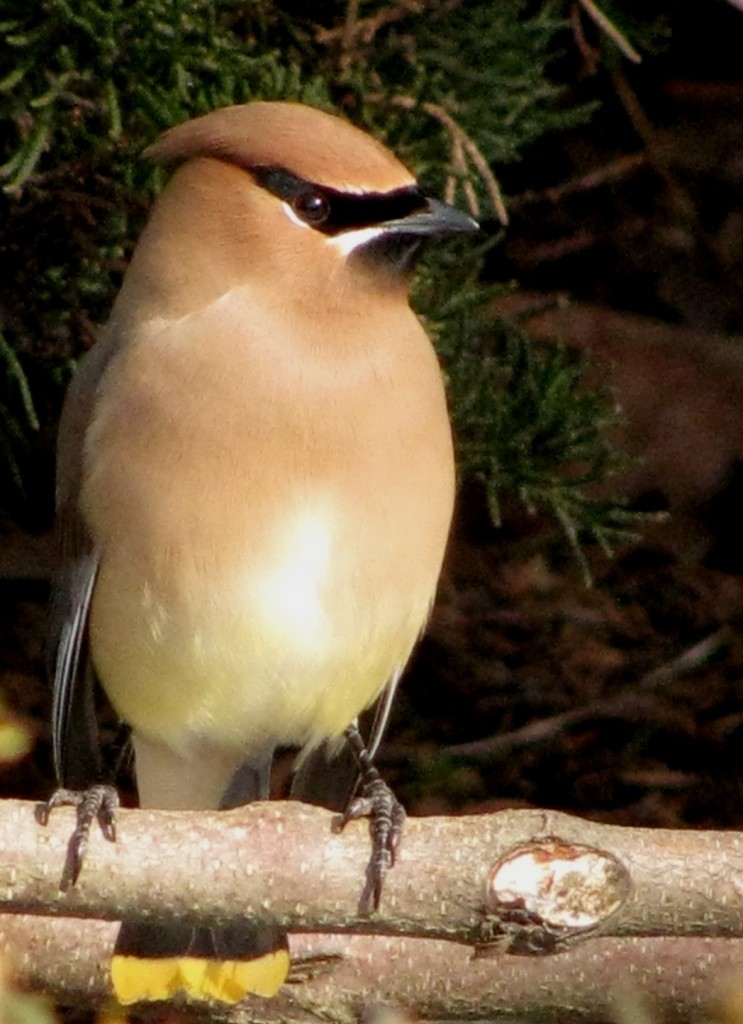
Cedar Waxwing (© Magi Nams)
The rock garden, with its heat-reflecting boulders and sprouting daffodils, also attracted other seed eaters. American goldfinches and mourning doves foraged on the ground, while a black-capped chickadee and blue jay made brief visits to the garden’s periphery. European starlings and American crows basked high in the canopies of elm trees, and I spotted two Canada geese winging overhead.
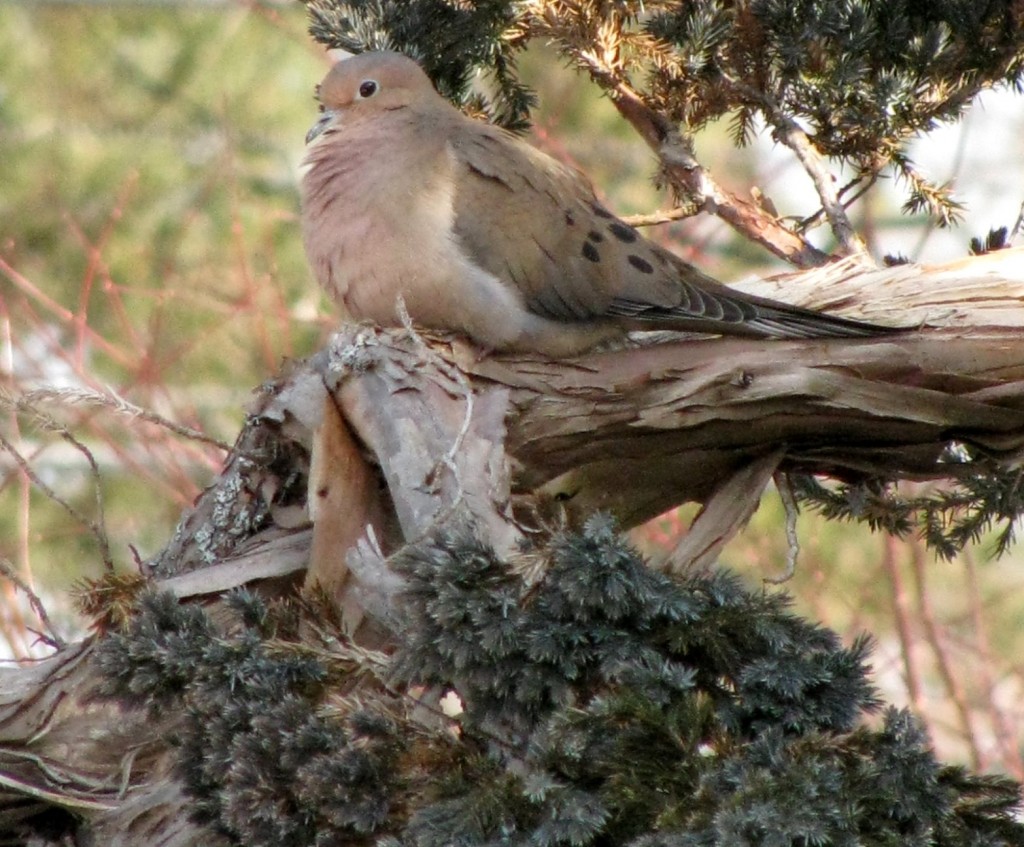
Mourning Dove (© Magi Nams)

NSAC Rock Garden (© M. Nams)
Behind the college’s red-brick buildings, I walked east on a section of the Cobequid Trail. The college’s farm fields lay to my left, and on my right, a steep bank cloaked in mixed forest plunged to the Salmon River’s grassy floodplain. Crows streamed overhead, and a pair of ravens squawked while skimming above a field alongside the river. I spotted a trio of chickadees foraging in deciduous trees, and more basking starlings. Although I saw only a few species from the trail yesterday, the mix of fields, grassland, conifers, and deciduous trees will undoubtedly attract a variety of migrational songbirds in May and June.
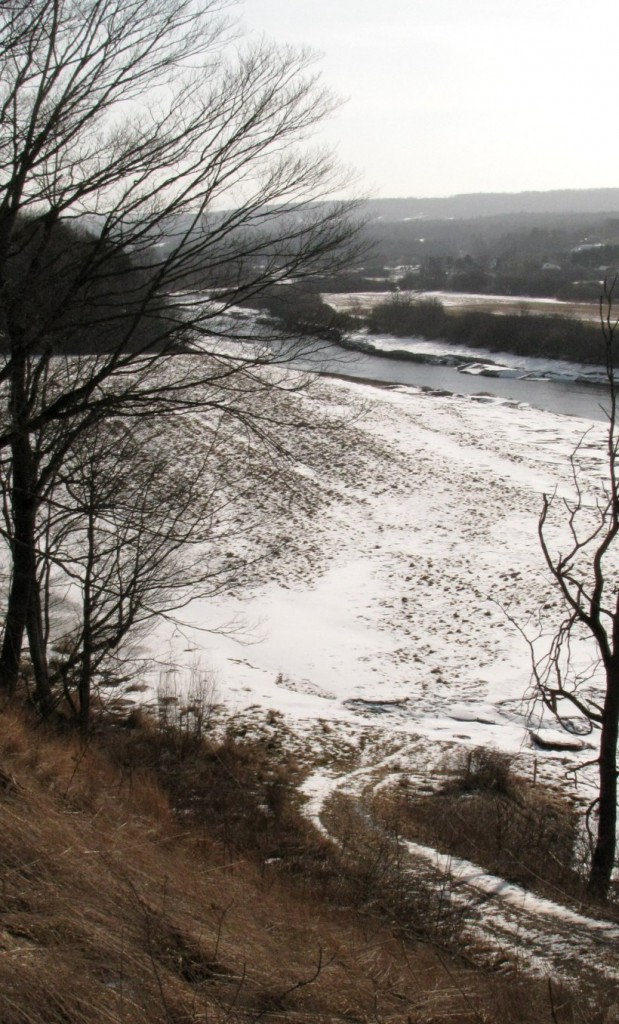
Salmon River, Truro, Nova Scotia (© Magi Nams)
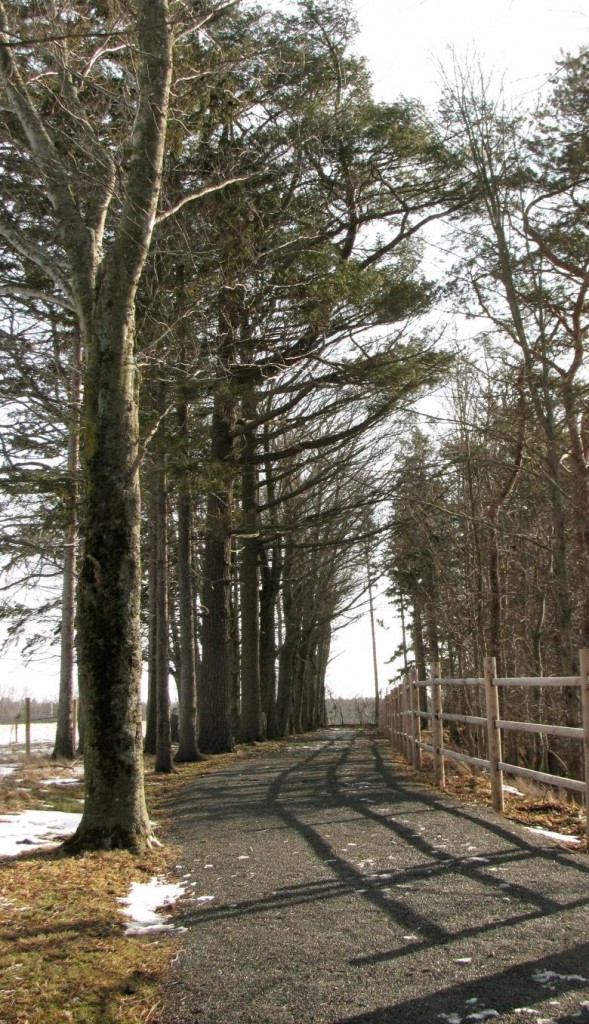
Cobequid Trail, Truro, Nova Scotia (© Magi Nams)
By mid-morning, the wind was up and warm with all the promise of spring in its breath. I strode along beside Lepper Brook in Victoria Park (a 400-acre woodland), chalking up sightings of ravens cruising above the hemlock-shaded brook and flocks of pine siskins high in the hemlocks. I heard red squirrels chattering and a dark-eyed junco singing his territorial mating call, my first this year. Meltwater dripped down rocky inclines and over sheets of icicles. Warm air wafted down the creekbed, vying with cool shade for dominance. Upstream, Joseph Howe Falls, still caught in shade, poured white-laced black water over rock and ice.

Joseph Howe Falls, Victoria Park, Truro, Nova Scotia (© Magi Nams)
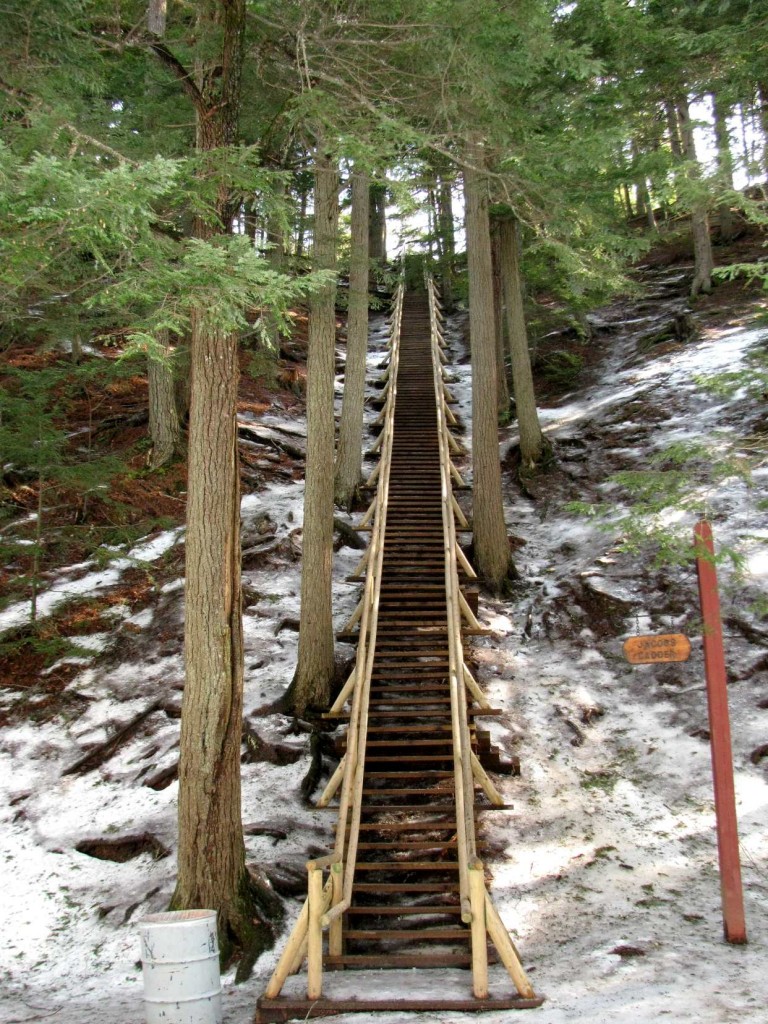
Jacob’s Ladder, Victoria Park, Truro, Nova Scotia (© Magi Nams)
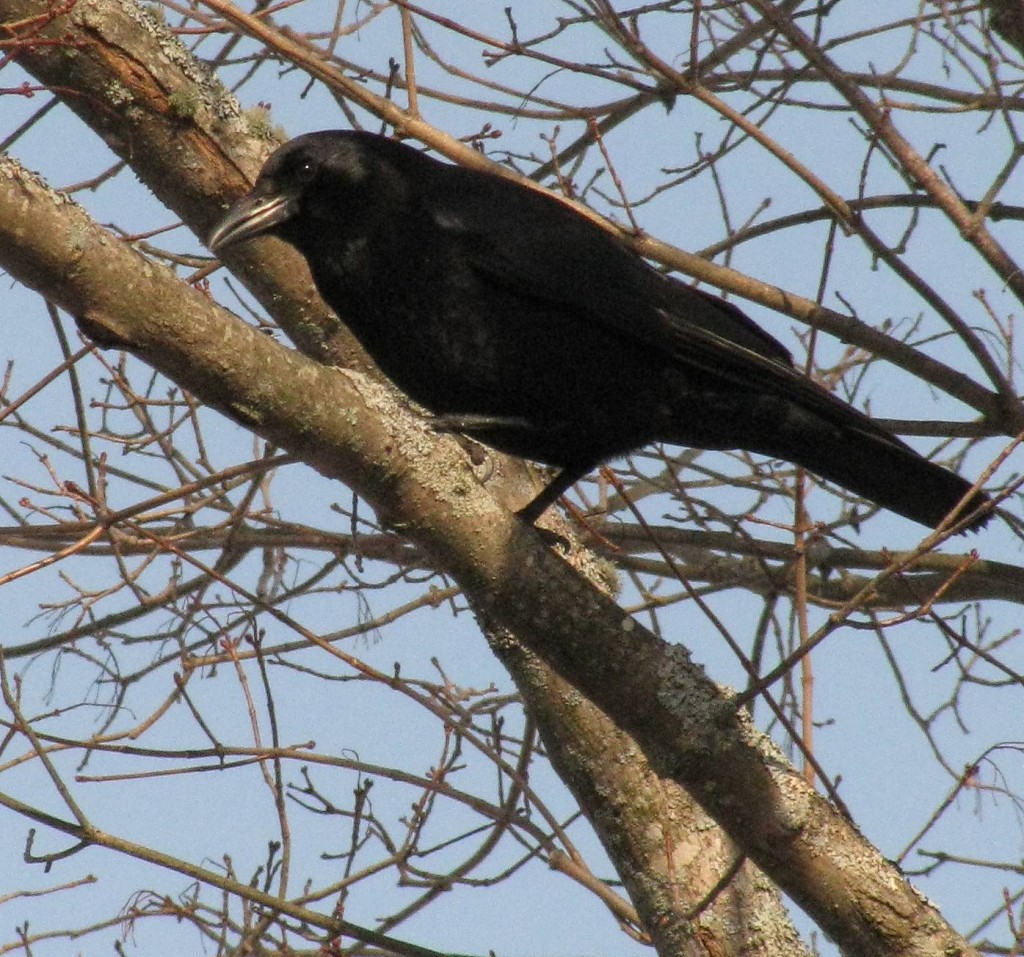
American Crow (© Magi Nams)
Kiwanis Park in west Truro was my last birding stop of the day, sandwiched between shopping chores. Mallards waddled onshore and paddled on the pond in the company of an American coot. A female common merganser floated and dove near the edge of a sheet of ice covering half the pond, and two herring gulls basked on the ice, the afternoon sun highlighting their pink legs and yellow bills with a red spot. Crows and chickadees foraged in the tangle of shrubs and low trees adjacent to the pond. All in all, a spectacular late winter day, and a good foretaste of Truro birds. I’ll definitely return for the heady throes of songbird mating in May and June.
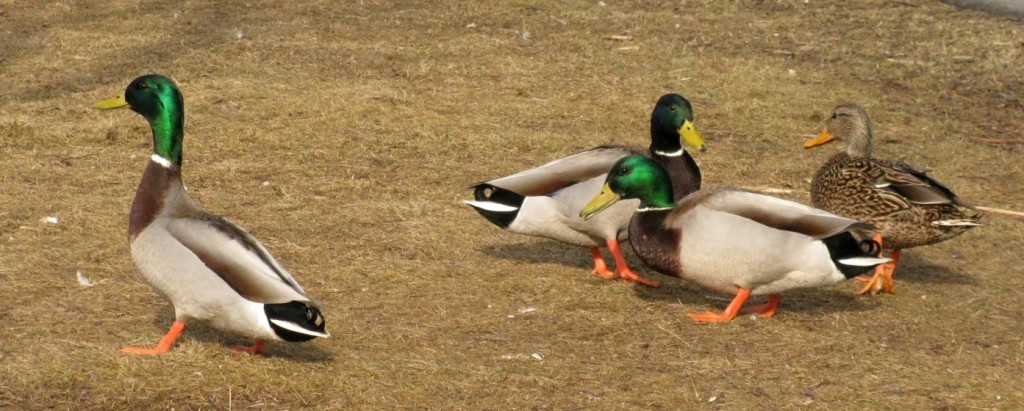
Mallards (© Magi Nams)

